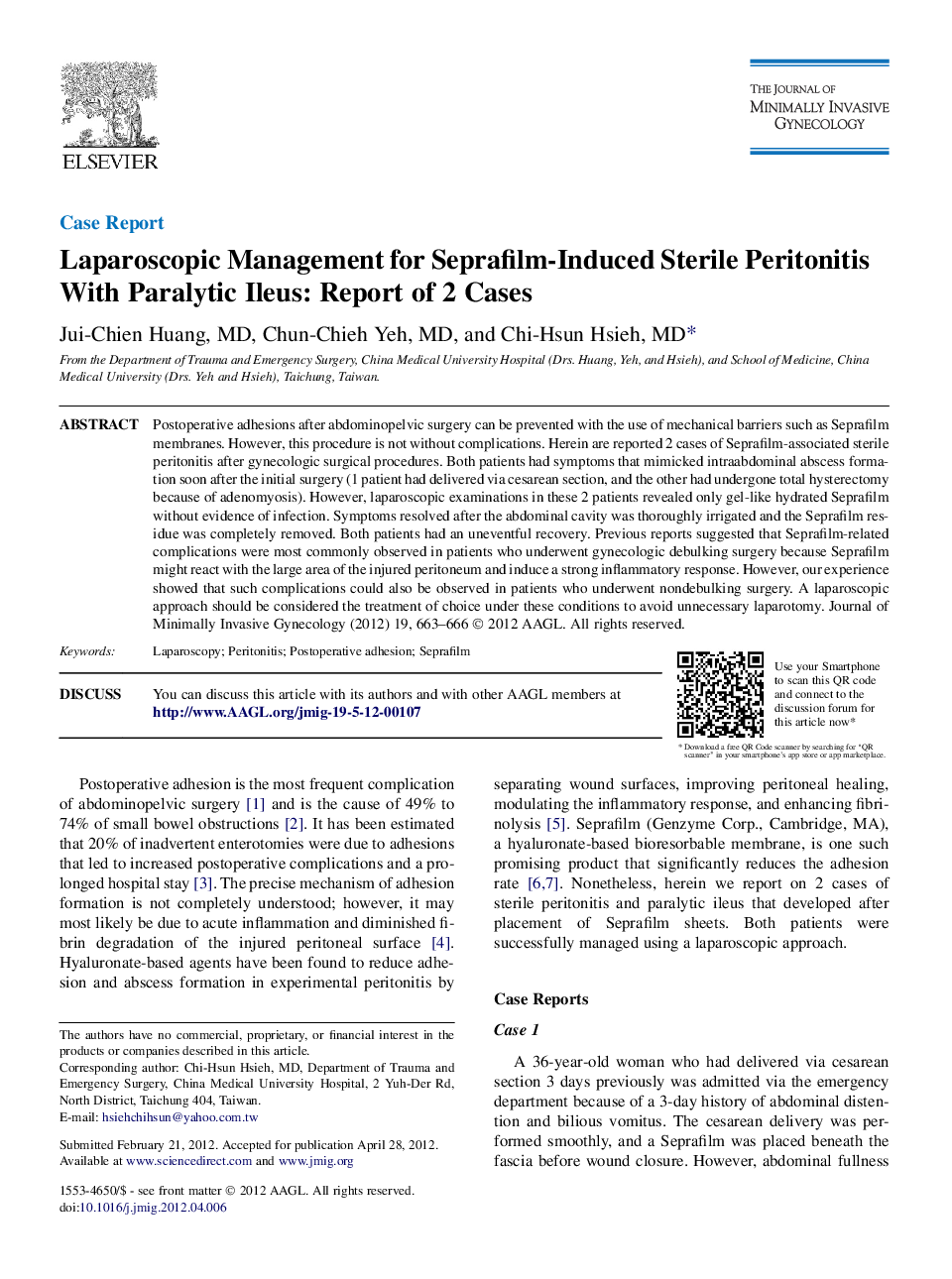| Article ID | Journal | Published Year | Pages | File Type |
|---|---|---|---|---|
| 3957570 | Journal of Minimally Invasive Gynecology | 2012 | 4 Pages |
Abstract
Postoperative adhesions after abdominopelvic surgery can be prevented with the use of mechanical barriers such as Seprafilm membranes. However, this procedure is not without complications. Herein are reported 2 cases of Seprafilm-associated sterile peritonitis after gynecologic surgical procedures. Both patients had symptoms that mimicked intraabdominal abscess formation soon after the initial surgery (1 patient had delivered via cesarean section, and the other had undergone total hysterectomy because of adenomyosis). However, laparoscopic examinations in these 2 patients revealed only gel-like hydrated Seprafilm without evidence of infection. Symptoms resolved after the abdominal cavity was thoroughly irrigated and the Seprafilm residue was completely removed. Both patients had an uneventful recovery. Previous reports suggested that Seprafilm-related complications were most commonly observed in patients who underwent gynecologic debulking surgery because Seprafilm might react with the large area of the injured peritoneum and induce a strong inflammatory response. However, our experience showed that such complications could also be observed in patients who underwent nondebulking surgery. A laparoscopic approach should be considered the treatment of choice under these conditions to avoid unnecessary laparotomy.
Related Topics
Health Sciences
Medicine and Dentistry
Obstetrics, Gynecology and Women's Health
Authors
Jui-Chien MD, Chun-Chieh MD, Chi-Hsun MD,
